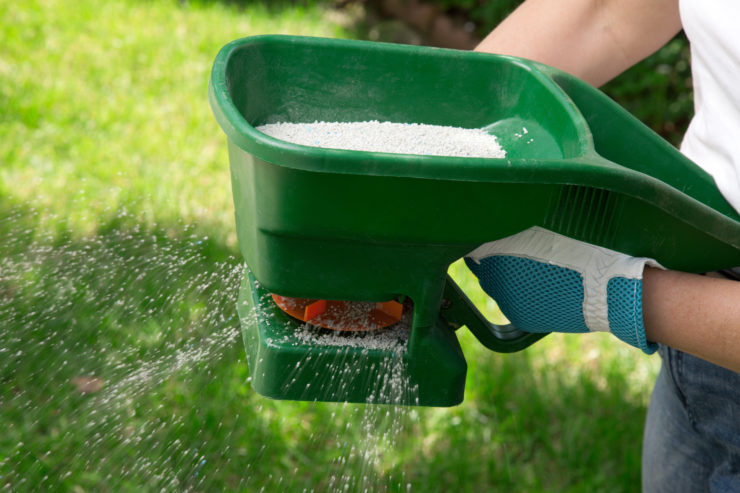Get your summer lawn looking lush with some expert advice.
Your lawn is probably getting better with each watering and each sunny day. But some of us are still patching over the lawn damage from last year’s heat and the winter’s long cold.
Sheriden Hansen helps us revive the lawn.
Find more gardening at extension.usu.edu/botanicalcenter.
How to Get Your Turf Turned Around
-
- Aerate
- Aeration can reduce compaction, improve water, air and nutrient movement through the rootzone
- Should be hollow-tine aeration, which means the machine removes a core of soil from the turf
- This should be done when turf is most actively growing. Spring and/or fall for cool season grasses like Kentucky Blue Grass and Fescue; Summer for warm season grasses like Buffalograss or Zyosiagrass.
- Add a nitrogen fertilizer
- Adding a nitrogen only fertilizer like a 21-0-0 (ammonium sulfate) or a 46-0-0 (urea) will support green, vegetative growth. Fertilizer should also be added during the same periods of active growth:
- Cool season grasses: early and late spring, late summer and fall.
- Warm season grasses: summer
- In the spring and fall, couple the fertilizer with a pre-emergent herbicide to reduce weed pressure if needed
- Adding a nitrogen only fertilizer like a 21-0-0 (ammonium sulfate) or a 46-0-0 (urea) will support green, vegetative growth. Fertilizer should also be added during the same periods of active growth:
- Water the right way
-
- Water should be applied to turf between 1-3 times per week depending on temperature and soil type
- There is no reason that established turf should ever be watered daily!
- Allowing turf to dry slightly between irrigation events will drive roots deeper into the soil and create a healthy turf that will better stand up to heat in the summer.
-
- Mow at the proper height
-
- Our turf isn’t a golf course green – mowing turf short can cause stress: it removes much of the canopy, reduces photosynthesis, and increases moisture loss
- Turf should be mowed between 1 ½ to 3 inches high depending on temperature. Allow turf to be tall 2 1/2 to 3 inches in the summer and shorter in the early spring and fall. This helps to retain water and build a healthy cover that reduces weed seed germination and insect damage.
-
- Don’t sweat the brown
-
- Cool season turf enters a dormant period in the summer. If you see some browning, know that it is 100% natural and no amount of water or fertilizer will fix it. In fact, not allowing turf to naturally move through these cycles can add undue stress and contribute to unhealthy lawn in the long run!
-
- Aerate
Sheriden Hansen serves as an assistant professor of horticulture with the Utah State University Extension. She holds a Masters in Plant Science from Utah State University. Sheriden loves to teach about fruit and vegetable production, how to grow crops in small spaces and container gardening. Sheriden is married with two sons. She is a registered nurse and beekeeper.
Sheriden is with the USU Botanical Center in Kaysville. Here you will find beautiful walk-through gardens and a full roster of classes and family activities. Get connected with the Botanical Center at extension.usu.edu/botanicalcenter.















I have red clay dirt in my backyard.bi. trying to grow Bermuda grass from seeds in my cut close with lawnmower weeds
Watering twice a day. Package says. It takes 28 days to see any results.
I live in Sacramento,CA. Climate zone 9. Will this work for trying to establish a lawn?
How do you know the type of grass I have?